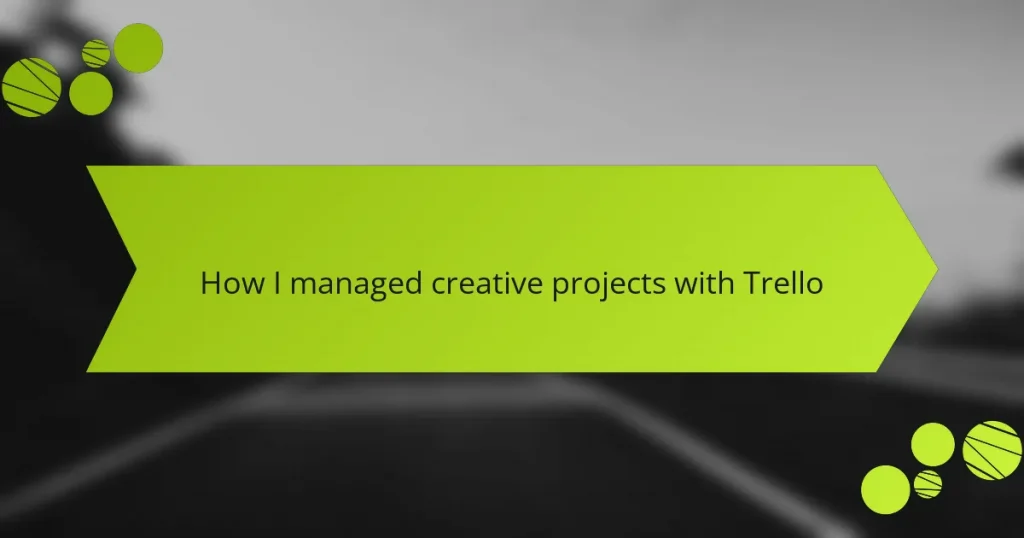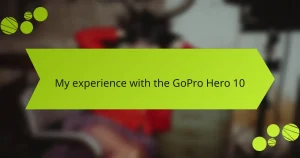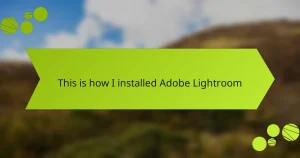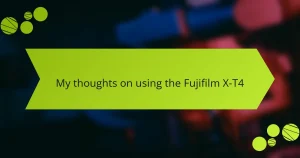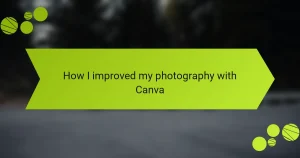Key takeaways
- Trello offers a visual task management system with customization options that enhance organization and workflow.
- Collaboration features allow for seamless communication and task assignment, fostering a shared sense of ownership.
- Breaking down tasks into smaller steps and setting deadlines increases accountability and productivity.
- Regular check-ins with team members promote alignment and maintain motivation throughout the project.
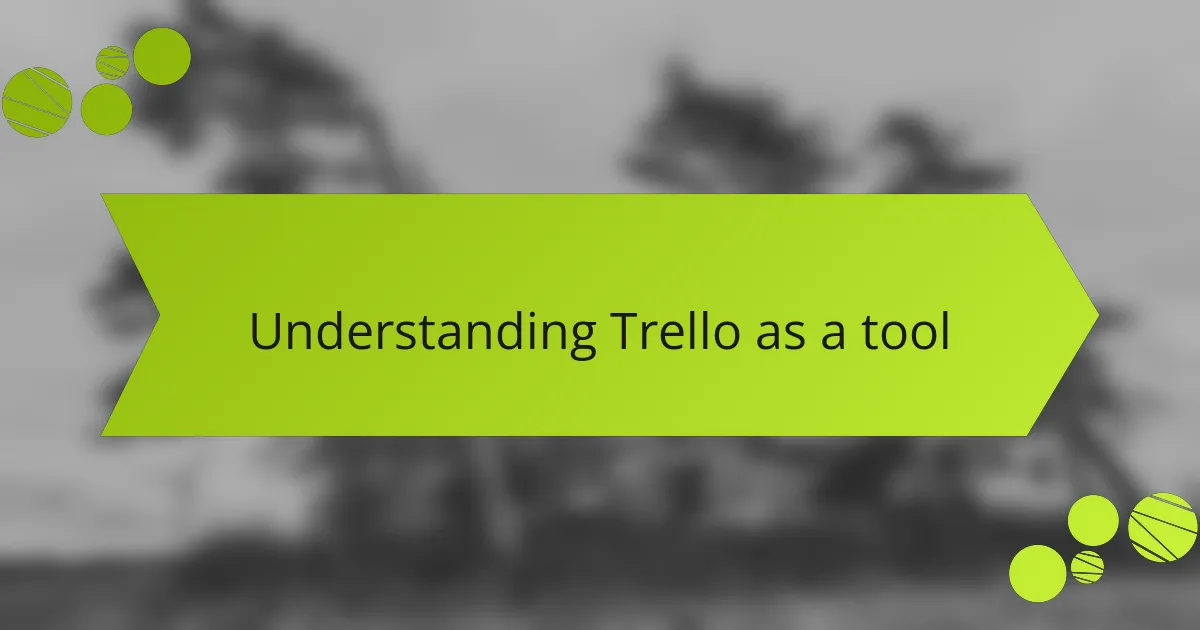
Understanding Trello as a tool
Trello stands out to me as an incredibly versatile tool for managing creative projects. Its card-and-board system makes everything visually engaging and easy to navigate. I remember the first time I used Trello; I was overwhelmed by my tasks, but once I set up my boards, everything clicked into place. Seeing my ideas and tasks laid out visually helped alleviate my stress and brought clarity to the chaos.
One of the strengths of Trello is its flexibility. You can customize boards for various stages of your projects, whether brainstorming or tracking progress. The ability to add checklists, due dates, and attachments has significantly improved my workflow. Here are some features that make Trello a fantastic tool for managing creative projects:
- Visual Organization: Use boards, lists, and cards to map out your projects.
- Customization Options: Tailor your workflow with colors, labels, and due dates.
- Team Collaboration: Invite team members and assign tasks easily.
- Integration: Sync with other tools like Google Drive and Slack.
- Mobile Access: Manage your projects on the go with the Trello app.
By leveraging these features, I’ve transformed my creative projects into manageable tasks, making the process enjoyable rather than overwhelming.
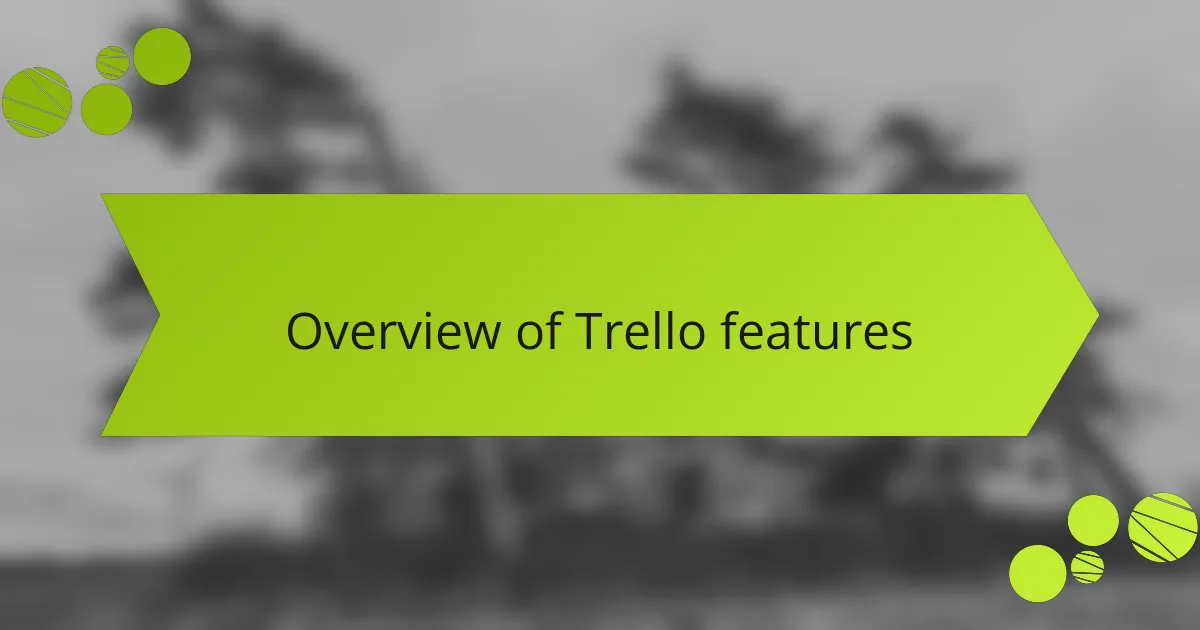
Overview of Trello features
Trello is a versatile project management tool that has been invaluable in my creative endeavors. The visual layout, featuring boards, lists, and cards, allows me to organize tasks in a way that feels natural and intuitive. I remember feeling overwhelmed with an upcoming project until I discovered that breaking it down into smaller cards on a Trello board made everything more manageable and less daunting.
One of the standout features for me is the ability to customize each card with due dates, labels, and checklists. Seeing tasks in different colors helps me prioritize effectively. I also appreciate how easy it is to collaborate with teammates; directly assigning tasks and adding comments means everyone stays in the loop and communication is seamless.
- Boards, Lists, and Cards: Create a visual workflow, moving tasks easily from one stage to another.
- Labels: Use color-coded labels to categorize tasks for better organization at a glance.
- Due Dates: Set deadlines to keep projects on track and ensure timely completion.
- Checklists: Break tasks into subtasks with checklists, making progress clear and achievable.
- Collaboration Tools: Assign tasks to team members and communicate through comments directly on cards.
- Attachments: Add files and links for easy access to resources and references.

Benefits of using Trello
Trello has transformed how I organize my creative projects, and I can’t help but appreciate the simplicity it brings to my workflow. One of the immediate benefits I noticed was the clarity that comes with visual organization. Instead of feeling lost in a sea of tasks, I could see everything laid out in front of me like a neatly arranged canvas. Have you ever experienced that moment when everything just clicks? For me, that was when I moved my ideas from my mind to the Trello board.
Collaboration is another major advantage of using Trello. Whenever I bring a team into the mix, I find the platform fosters open communication and accountability. It encourages not just task assignments but a shared sense of ownership over the projects. I often think back to the time I worked with a group on a tight deadline; the ease of assigning tasks and updating statuses in real-time was a game changer. It felt great knowing everyone was on the same page.
One of Trello’s standout features for me is integration with other tools. Connecting Trello with Google Drive transformed how I access resources and share materials with my team. I remember working late into the night, but with everything so organized and easily accessible, I felt empowered rather than overwhelmed. It’s as if Trello created a seamless bridge between my creativity and the logistical aspects of project management, making the entire process enjoyable and productive.
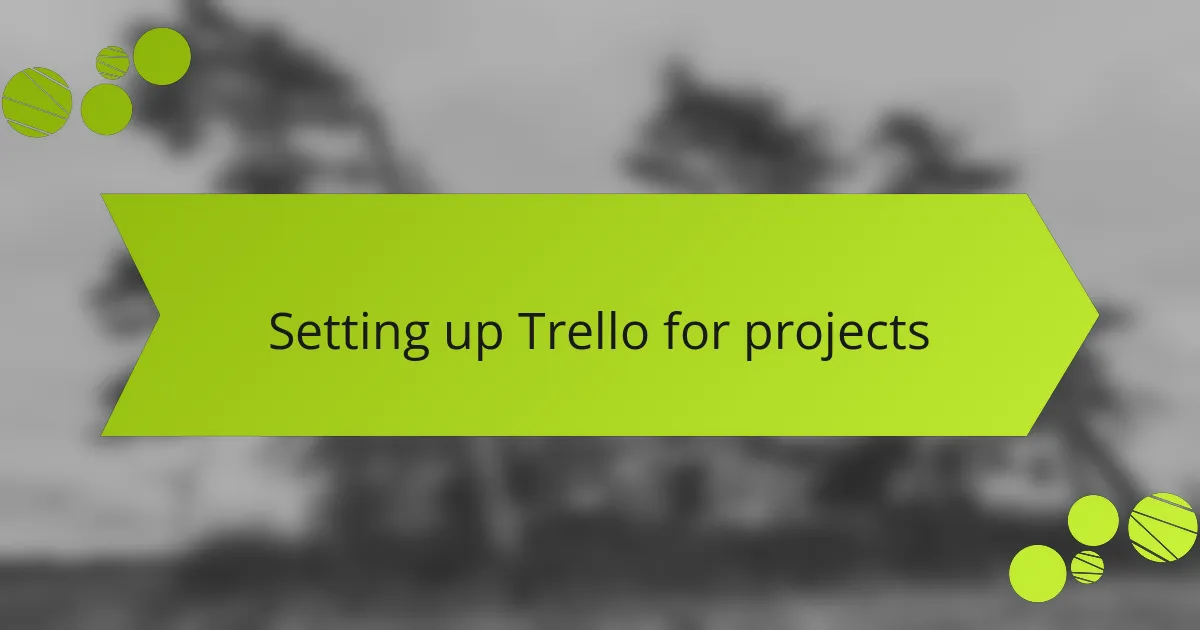
Setting up Trello for projects
Setting up Trello for my projects was an eye-opening experience. When I first created my boards, I experimented with different layouts to see what felt right. I vividly remember the thrill of organizing my ideas into lists. It was as if I was chalking out a roadmap for my creativity. I started with a simple board for each project, naming them after themes or goals, which made navigating tasks feel intuitive.
As I delved deeper, I discovered how powerful the checklists could be. I often break down larger tasks into smaller, manageable steps on the cards. It’s a satisfying feeling to check off items as I complete them. I recall the rush I felt when I finished a lengthy checklist for a project deadline—each tick was a little victory! Setting due dates on my tasks quickly became a game changer, keeping me motivated and focused. Do you ever find yourself losing track of time on tasks? I certainly have, but Trello helped me stay anchored.
One feature that I can’t stress enough is the use of labels for categorization. At one point, I color-coded my cards by priority, and it was enlightening to see at a glance what needed immediate attention. That’s when it hit me: visual cues make a profound difference. The ease of dragging and dropping cards between lists as I progressed was like watching a beautifully choreographed dance. Each move captured my workflow, providing that satisfying sense of progress that I believe every creative person craves.
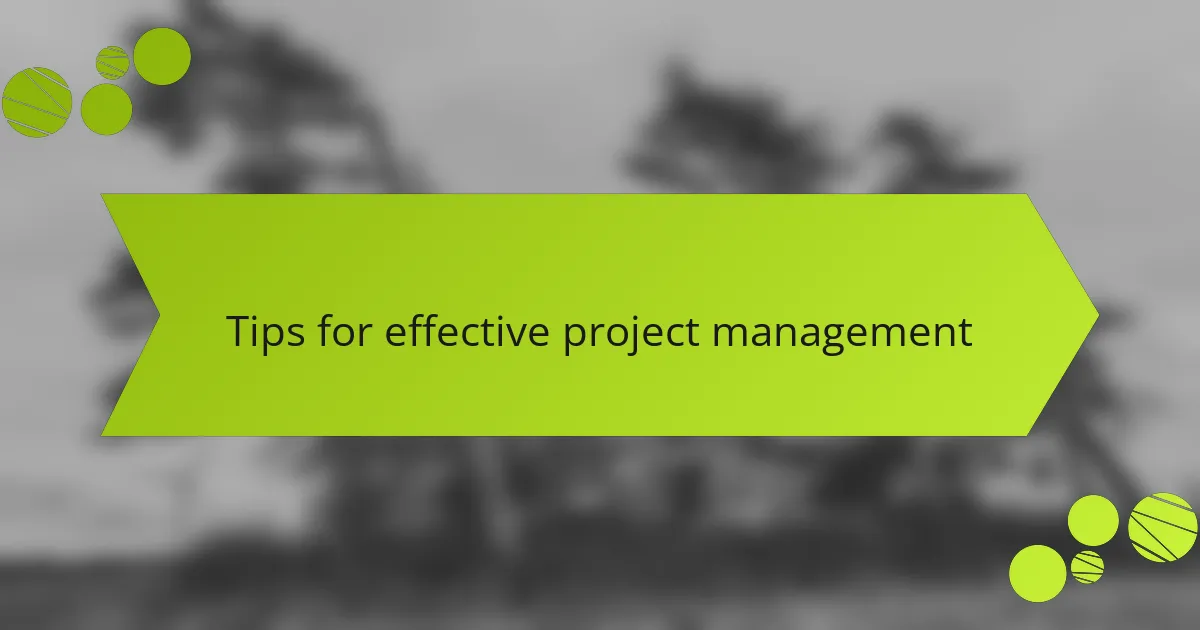
Tips for effective project management
When managing creative projects, staying organized is crucial. I found that breaking tasks into smaller, manageable steps helps alleviate overwhelm. For instance, I often use Trello’s checklist feature to track progress on each part of a project, allowing me to celebrate small wins along the way.
Another tip that worked well for me is setting clear deadlines for each task. This practice not only keeps the momentum going but also fosters accountability within the team. I’ve noticed that when everyone is on the same page with timelines, it creates a sense of urgency that boosts productivity.
Lastly, don’t underestimate the value of regular check-ins. Scheduling brief, consistent meetings—whether virtual or in-person—can foster collaboration and ensure that everyone is aligned with the project goals. I’ve seen this practice raise team morale and keep the creative juices flowing effortlessly.
| Tip | Description |
|---|---|
| Break Tasks Down | Divide larger tasks into actionable steps to reduce overwhelm. |
| Set Clear Deadlines | Establish timelines to foster accountability and maintain momentum. |
| Regular Check-Ins | Hold consistent meetings to encourage collaboration and alignment. |
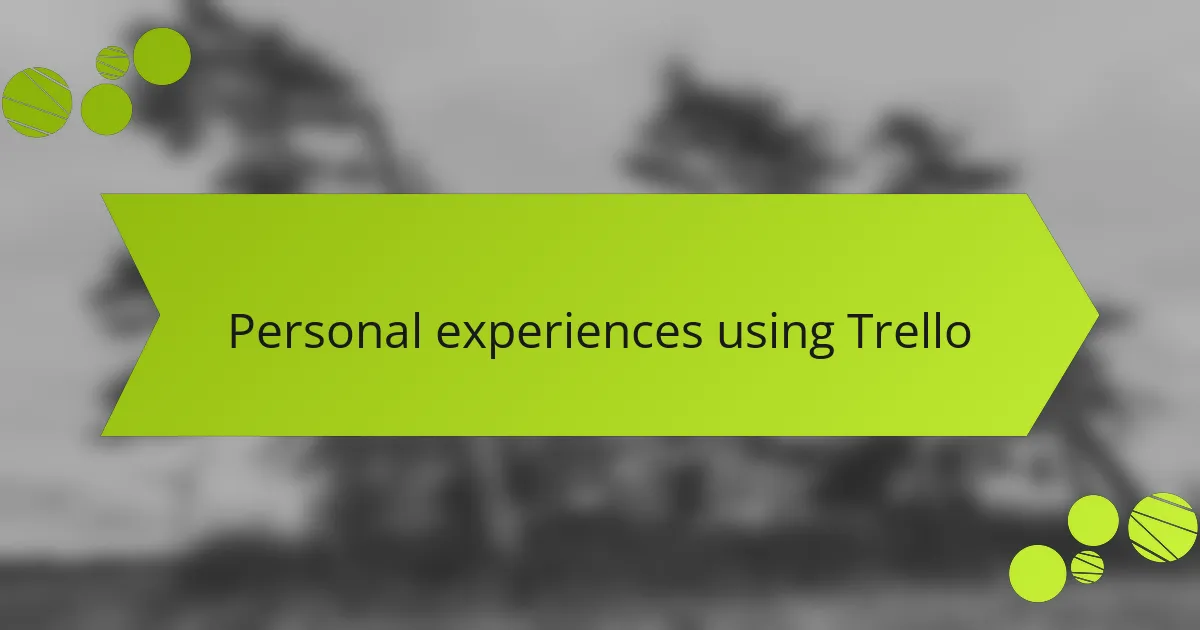
Personal experiences using Trello
I’ve found that using Trello has transformed how I manage my creative projects. For instance, I vividly remember the chaos of juggling multiple photography assignments and deadlines. Trello provided a visual overview that helped me prioritize tasks and allocate time effectively. It felt reassuring to drag and drop cards, watching my progress unfold as I moved them to the “Completed” list.
Every project became more manageable as I tailored my boards to fit different workflows. I discovered that creating specific lists for brainstorming, in-progress tasks, and final reviews allowed me to stay organized while keeping my creativity flowing. The sense of satisfaction I experienced when I checked off those tasks was immensely rewarding.
Here are some key features of Trello that enhanced my creative workflow:
- Visual Task Management: Easy-to-use boards and cards provided clarity on priorities.
- Collaboration Tools: I could effortlessly share boards with collaborators, making communication seamless.
- Customizable Labels: Color-coded labels helped me categorize projects by type or urgency.
- Checklists: Breaking down tasks into small, manageable steps made large projects feel less overwhelming.
- Due Dates and Reminders: Setting deadlines kept me accountable and ensured projects stayed on track.
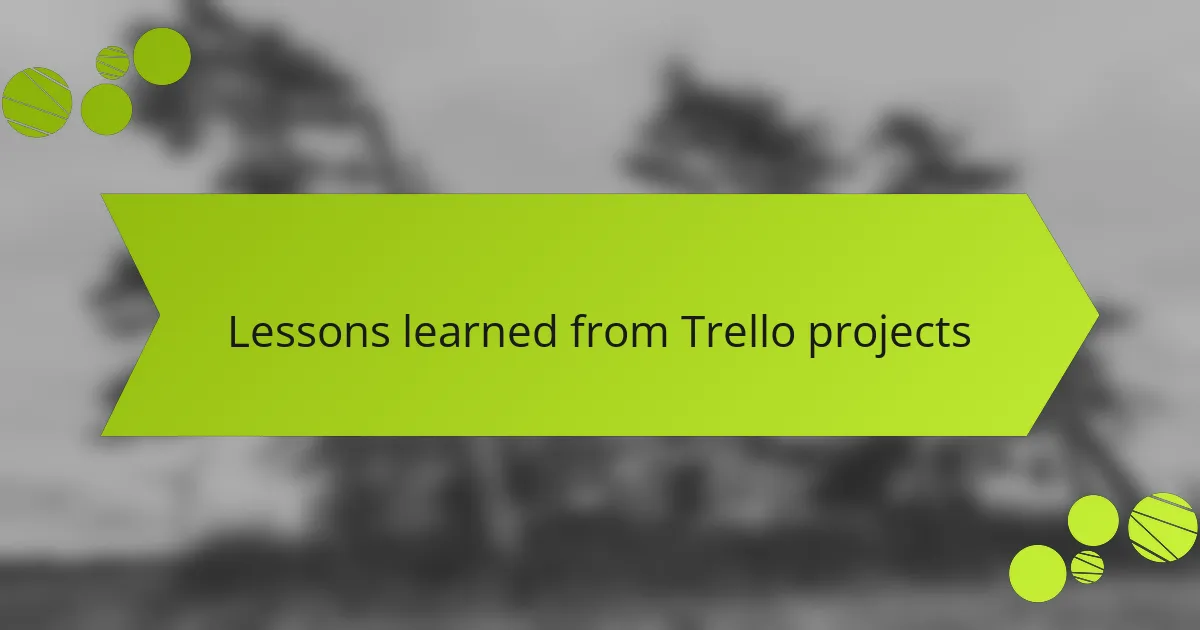
Lessons learned from Trello projects
Managing creative projects with Trello has taught me quite a bit about organization and flexibility. One important lesson was the value of visual task management. I remember staring at my Trello board, feeling overwhelmed by my many tasks. Once I began breaking down projects into smaller cards, everything transformed. I found it easier to track progress and celebrate small wins along the way.
Another valuable insight is the importance of adapting workflows. Initially, I tried to stick to a rigid process. However, as I adjusted my approach, incorporating feedback and changing timelines, my productivity soared. It was a reminder that sometimes, we need to allow our systems to evolve alongside our projects.
In my experience, transparency within the team is crucial. I learned that keeping everyone informed on the board fosters collaboration and minimizes miscommunication. Regular check-ins made me appreciate this even more, helping maintain motivation and focus.
| Lesson | Insight |
|---|---|
| Visual organization | Breaking tasks into smaller cards enhances clarity and progress tracking. |
| Adaptability | Adjusting workflows based on feedback increases productivity. |
| Transparency | Open communication fosters collaboration and minimizes misunderstandings. |
